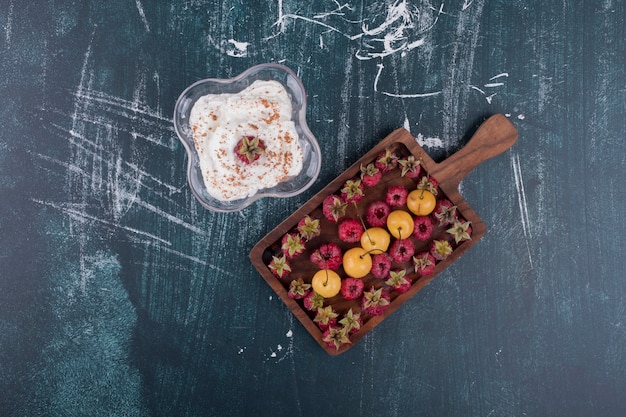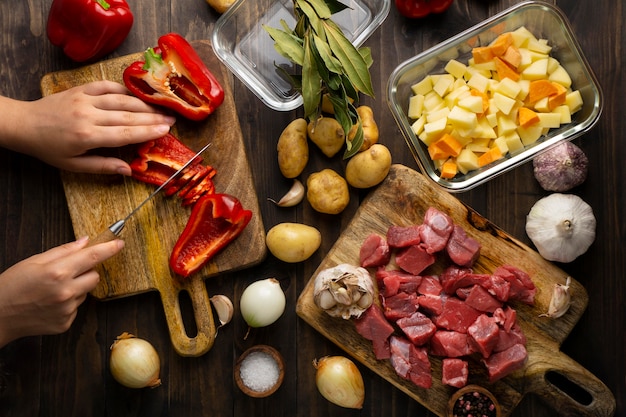I've always been a bit of a veggie enthusiast, but there's one ingredient I've historically been a bit hesitant about – beet greens. Don't get me wrong, I love beets! I mean, who can resist those vibrant magenta roots? But those leafy tops always felt a little… intimidating. I'd see them discarded at the farmers' market, seemingly unwanted, and I couldn't help but feel a bit guilty. It felt like wasting a perfectly good source of nutrition.
Well, let's just say I'm happy to report that my perception of beet greens has completely changed. Over the past year or so, I've been on a mission to discover their culinary potential, and I'm absolutely delighted with what I've found. Beet greens, my friends, are a culinary treasure just waiting to be explored. They're packed with nutrients, bursting with flavour, and unbelievably versatile. I'm here to share my journey of discovery with you and hopefully, inspire you to embrace these often-overlooked culinary gems!
(Part 1) Beet Greens – A Culinary Treasure

I'm going to be honest, I used to think beet greens were just a byproduct of the beet, something to be discarded after the real star of the show was harvested. But let me tell you, that couldn't be further from the truth. These leafy greens are packed with an impressive range of vitamins and minerals, making them a nutritional powerhouse. They're an excellent source of Vitamin A, Vitamin C, Vitamin K, iron, and calcium, just to name a few. And let's not forget the fibre! I can't help but feel good about adding something so nutritious to my meals.
The Flavor Profile – Earthy, Sweet, and Tangy
The flavour of beet greens is really what captivated me. They have a delicious earthy flavour that's reminiscent of spinach, but with a subtle sweetness and a touch of tang that adds a unique twist. It's a flavour that's both comforting and exciting. I find that the flavour of the greens can vary depending on the variety of beet and how they're cooked. Some varieties are a little more bitter than others, but I've found that a simple saute with garlic and olive oil can really bring out the sweetness and minimise any bitterness.
For those who find the bitterness a bit too much, there are ways to mitigate it. A quick blanch before sauteing can help to draw out some of the bitterness. Alternatively, pairing them with complementary flavours like citrus, vinegar, or even a touch of honey can also help balance out the taste.
(Part 2) Getting to Know Beet Greens

Before we delve into the delicious recipes, let's take a moment to get acquainted with these leafy beauties.
Choosing the Right Greens
The first thing to keep in mind when buying beet greens is to look for fresh, vibrant leaves. The leaves should be bright green and free of any wilting or yellowing. Imagine them as vibrant green flags waving in the breeze! I also try to select leaves that are relatively small, as they tend to be more tender. Larger leaves might be a bit tougher. You’ll know they’re not fresh if the leaves are brown or yellowing. Those are going to be tough and bitter, and you’ll want to avoid those.
Storing Beet Greens
Once you’ve got your hands on some fresh beet greens, it’s important to store them properly. Just like any leafy greens, you’ll want to wash them thoroughly and dry them gently. A salad spinner comes in handy here. You can then wrap them loosely in a paper towel or kitchen towel, place them in an airtight container, and store them in the refrigerator. They should stay fresh for 3-4 days, but try to use them as soon as possible for the best flavour.
Preparing Beet Greens
There’s no need to be intimidated by the preparation of beet greens. It’s a straightforward process. The first thing to do is to remove the tough stems. Simply grab each stem and snap it off at the base of the leaf. You can then wash the leaves thoroughly and dry them. And that’s it! You’re ready to cook!
(Part 3) Beet Greens Recipes: Embrace the Flavor

Now that we’re all caught up on the basics, let’s get to the fun part – the recipes! I’m excited to share some of my favourite ways to cook beet greens. These recipes are simple, delicious, and will showcase the best of these underappreciated greens.
Sautéed Beet Greens with Garlic
This is the perfect starting point for exploring the world of beet greens. It’s a simple, flavourful dish that highlights the natural sweetness and tang of the greens. And it's incredibly easy to make.
Ingredients:
- 1 bunch beet greens, washed and stems removed
- 2 tablespoons olive oil
- 2 cloves garlic, minced
- Salt and black pepper to taste
Instructions:
- Heat olive oil in a large skillet over medium heat. Add garlic and cook for about 1 minute, until fragrant. You’ll know it’s ready when the aroma fills your kitchen.
- Add beet greens to the skillet and cook, stirring frequently, until wilted and tender, about 5-7 minutes. You want the greens to be wilted but still have a bit of a bite.
- Season with salt and pepper to taste. Taste as you go and adjust the seasoning to your preference.
- Serve immediately. Enjoy the delicious, simple flavours!
Beet Green and Feta Salad
This salad is bright, refreshing, and perfect for a light lunch or a side dish. The salty feta cheese and tangy vinaigrette provide a wonderful complement to the earthy beet greens. It's a delightful combination of textures and flavours.
Ingredients:
- 1 bunch beet greens, washed and stems removed
- 1/2 cup crumbled feta cheese
- 1/4 cup chopped red onion
- 1/4 cup chopped walnuts
- Vinaigrette (see recipe below)
Instructions:
- In a large bowl, combine beet greens, feta cheese, red onion, and walnuts. The walnuts add a nice crunch to the salad.
- Drizzle with vinaigrette and toss to combine. Make sure all the ingredients are coated in the dressing.
- Serve immediately. This salad is best enjoyed fresh.
Vinaigrette
- 1/4 cup olive oil
- 2 tablespoons lemon juice
- 1 tablespoon Dijon mustard
- 1/2 teaspoon honey
- Salt and black pepper to taste
Instructions:
- In a small bowl, whisk together all ingredients until well combined. The honey adds a touch of sweetness that balances the tanginess of the lemon juice.
Beet Green and chickpea curry
For a hearty and flavourful dinner, try this beet green and chickpea curry. It’s a vibrant dish that’s packed with flavour and is surprisingly easy to make. You can adjust the spiciness to your preference by adding more or less chilli powder. This dish is perfect for a cold night!
Ingredients:
- 1 tablespoon olive oil
- 1 onion, chopped
- 2 cloves garlic, minced
- 1 inch ginger, grated
- 1 teaspoon ground cumin
- 1 teaspoon ground coriander
- 1/2 teaspoon turmeric powder
- 1/4 teaspoon chilli powder (optional)
- 1 (14 ounce) can diced tomatoes, undrained
- 1 (15 ounce) can chickpeas, drained and rinsed
- 1 bunch beet greens, washed and stems removed
- Salt and pepper to taste
- Fresh cilantro, chopped, for garnish (optional)
Instructions:
- Heat olive oil in a large pot or dutch oven over medium heat. Add onion and cook, stirring occasionally, until softened, about 5 minutes. You want the onion to be translucent and slightly caramelized.
- Add garlic, ginger, cumin, coriander, turmeric, and chilli powder (if using) and cook, stirring constantly, for 1 minute, until fragrant. The spices will release their aromas and flavours, filling your kitchen with a warm, inviting scent.
- Stir in diced tomatoes, chickpeas, and 1 cup of water. Bring to a boil, then reduce heat to low, cover, and simmer for 15 minutes. The chickpeas will soften and absorb the flavours of the spices.
- Add beet greens and cook, stirring occasionally, until wilted and tender, about 5-7 minutes. The beet greens will wilt down and add a delicious earthy flavour to the curry.
- Season with salt and pepper to taste. Taste as you go and adjust the seasoning to your liking.
- Garnish with fresh cilantro, if desired. The cilantro adds a fresh, herbaceous touch to the curry.
- Serve warm with rice or naan bread. This curry is best enjoyed with a side of fluffy rice or warm naan bread for dipping.
(Part 4) Beyond the Basics: Exploring Different cooking techniques
While sauteing is a great way to prepare beet greens, there are other cooking methods that can enhance their flavour and texture. Let’s explore a few!
Blanching Beet Greens
Blanching is a technique that involves briefly cooking food in boiling water before shocking it in ice water. It helps to preserve the colour and texture of leafy greens, making them ideal for salads or as a side dish. Blanching also helps to remove any bitterness from the greens.
Instructions:
- Bring a large pot of salted water to a boil. The salt helps to season the greens and enhances their flavour.
- Add beet greens to the boiling water and cook for 30 seconds to 1 minute, until slightly wilted. You don’t want to overcook them, as they’ll become mushy.
- Immediately transfer the greens to a bowl of ice water to stop the cooking process. This is called shocking, and it helps to preserve the bright green colour of the greens.
- Drain the greens and pat them dry. They’re now ready to be used in salads or other dishes.
Stir-Frying Beet Greens
Stir-frying is a quick and efficient cooking method that’s perfect for leafy greens. The high heat helps to preserve the vibrant colour and creates a tender, slightly crispy texture. It’s a great way to add a bit of excitement to your meals.
Instructions:
- Heat a wok or large skillet over high heat. The high heat is essential for the stir-frying technique.
- Add olive oil and your favourite stir-fry ingredients, such as garlic, ginger, and protein. You can use any protein you like, from tofu to chicken to shrimp.
- Once the ingredients are heated through, add beet greens and stir-fry for 2-3 minutes, until wilted and tender. You want the greens to be cooked through but still have a bit of a crunch.
- Serve immediately with rice or noodles. A stir-fry is best enjoyed hot and fresh.
Adding Beet Greens to Smoothies
For a boost of nutrients and a subtle earthy flavour, add beet greens to your smoothies. They blend seamlessly and create a refreshing, vibrant drink. It's a great way to sneak in some extra greens!
Instructions:
- Add a handful of beet greens to your blender along with your other smoothie ingredients, such as fruits, vegetables, and yogurt. Start with a small amount of greens and adjust to your liking.
- Blend until smooth. You want the smoothie to be smooth and creamy.
- Enjoy! This smoothie is a delicious and nutritious way to start your day or refuel after a workout.
(Part 5) Beet Greens in Other Cultures
Beet greens have been a staple in various cuisines around the world for centuries. Their adaptability and unique flavour have made them a beloved ingredient in many different dishes. Let’s take a look at how some cultures use beet greens.
Mediterranean Cuisine
In Mediterranean cuisine, beet greens are often used in stews and soups. They’re frequently combined with chickpeas, tomatoes, and herbs, creating hearty and flavourful dishes. The earthy flavour of the beet greens blends beautifully with the other ingredients in these dishes. They’re also a common ingredient in salads, providing a fresh and earthy counterpoint to the other ingredients.
One popular Mediterranean dish is "horta," a stew of boiled beet greens, wild greens, and herbs, seasoned with olive oil, lemon juice, and garlic. It’s a simple but incredibly delicious dish that highlights the fresh, earthy flavours of the greens.
Indian Cuisine
In Indian cuisine, beet greens are used in a variety of dishes, from curries to stir-fries. They’re often combined with spices like turmeric, cumin, and coriander, creating vibrant and aromatic dishes. Their earthy flavour blends beautifully with the complex spice profiles of Indian cuisine.
One example is "saag," a popular Indian dish made with spinach or mustard greens, but beet greens can also be used. It’s usually cooked with onions, garlic, ginger, and spices, and often served with a dollop of yogurt.
Italian Cuisine
In Italy, beet greens are known as "rape" and are often used in pasta dishes. They’re frequently sautéed with garlic and olive oil, creating a simple and delicious topping for pasta. They’re also sometimes added to soups and stews, providing a rich and earthy flavour.
A classic Italian dish featuring beet greens is "rape e patate," a simple but delicious dish of beet greens and potatoes, cooked with garlic and olive oil. It's a comforting and satisfying meal that highlights the earthy flavours of the greens.
(Part 6) Beet Greens in Your Kitchen: A culinary adventure
Beet greens are a culinary chameleon, easily adaptable to a range of dishes. They’re a fantastic addition to soups, stews, salads, curries, and even smoothies. You can sauté them, stir-fry them, blanch them, or even add them to your favourite pasta dish. The possibilities are endless!
With a little bit of creativity and a willingness to experiment, you can unlock the full potential of these often-overlooked leafy greens. Don’t be afraid to embrace their earthy flavour and unique texture. They’ll bring a vibrant burst of flavour and a dose of nutrition to your meals.
(Part 7) A Table of Beet Green Nutrition
The nutritional content of beet greens is a major reason why they should be a part of your regular diet. Here’s a table highlighting some key nutrients:
| Nutrient | Amount per 100g |
|---|---|
| Calories | 35 |
| Protein | 2.7g |
| Fiber | 3.2g |
| Vitamin A | 860 IU |
| Vitamin C | 39mg |
| Vitamin K | 250 mcg |
| Iron | 1.8mg |
| Calcium | 47mg |
As you can see, beet greens are a great source of vitamins and minerals, which are vital for maintaining good health. They’re also a good source of antioxidants, which help to protect your body from damage. So, go ahead and add a handful of beet greens to your next meal!
(Part 8) FAQs – Addressing Common Questions About Beet Greens
You might have a few questions about beet greens before you start experimenting with them. Here are some answers to common questions:
1. Can I eat beet greens raw?
Yes, you can eat beet greens raw, but they are typically more palatable when cooked. If you’re looking for a raw option, try adding them to salads or smoothies. They can add a nice earthy crunch to your salads.
2. Do I need to remove the stems before cooking beet greens?
It’s best to remove the stems before cooking beet greens. The stems are quite tough and fibrous, and they won’t cook down as easily as the leaves. You can simply snap them off at the base of the leaf. They can also add a bitter flavour to your dishes if you don’t remove them.
3. Are beet greens bitter?
Some varieties of beet greens can be slightly bitter, but it depends on how they’re cooked. A simple sauté with garlic and olive oil can help to bring out the sweetness and minimize any bitterness. Blanching the greens before cooking can also help to reduce the bitterness.
4. How long should I cook beet greens?
The cooking time for beet greens will vary depending on the cooking method. In general, they cook quickly. Sautéing them will take about 5-7 minutes, while blanching them will take 30 seconds to 1 minute. Overcooking them will make them mushy, so it’s important to cook them just until they’re tender.
5. What can I substitute for beet greens?
If you don’t have beet greens, you can substitute them with other leafy greens like spinach, kale, or chard. However, keep in mind that the flavour will be slightly different. Spinach will have a milder flavour, while kale and chard will have a more robust, earthy flavour.
(Part 9) Conclusion: A culinary journey Worth Taking
As I’ve discovered the wonderful world of beet greens, I’ve learned that these leafy beauties are more than just a byproduct of the beet. They’re a culinary treasure, bursting with flavour and packed with nutrients. I urge you to embrace these often-overlooked greens and embark on your own culinary journey. You might be surprised at the delicious dishes you can create!
Start with a simple sauté, then branch out to salads, curries, and more. Be creative, experiment, and let your imagination guide you. I can’t wait to hear about your own beet green adventures!
Everyone is watching

Perfect Rice Every Time: The Ultimate Guide to Cooking Rice
Cooking TipsAs a self-proclaimed foodie, I've always been a bit obsessed with rice. It's the foundation of countless cuisi...

Ultimate Guide to Cooking the Perfect Thanksgiving Turkey
Cooking TipsThanksgiving. Just the word conjures up images of overflowing tables laden with delicious food, the scent of r...

The Ultimate Guide to Cooking Asparagus: Tips, Techniques, and Recipes
Cooking TipsAsparagus. The mere mention of this spring delicacy conjures up images of vibrant green spears, crisp and burs...

Can You Cook Spaghetti with Gasoline? (The Shocking Truth)
Cooking TipsWe've all seen those crazy internet trends. You know, the ones that make you wonder, "Did someone actually try...

Chorizo and Eggs Recipe: The Ultimate Guide
Cooking TipsRight, let’s talk about chorizo and eggs. You know, that classic Spanish dish that's always a winner. It's th...
